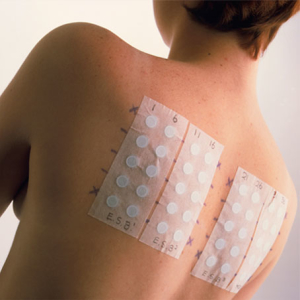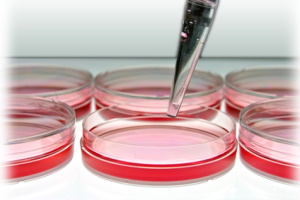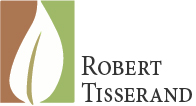In a recent blog post an Environmental Working Group (EWG) research assistant suggests that lavender oil may be unsafe, saying: “the science is still evolving and safety can’t be assumed.” The science is still evolving? Isn’t that true of anything? Are we just sowing the seeds of doubt here?
 I have written a number of posts about the EWG and sloppy science. Their modus operandi involves highlighting negative information, along with liberal use of the phrase “has been linked to”. Facts are so often distorted that their reputation in scientific circles is all but worthless. I have never read an EWG report in which both sides of an argument are presented. The problem I have with this approach is that the EWG audience is consumers, who have neither the scientific training nor the knowledge and expertise to challenge what is being said. In spite of this many do, because they instinctively feel that something is not right.
I have written a number of posts about the EWG and sloppy science. Their modus operandi involves highlighting negative information, along with liberal use of the phrase “has been linked to”. Facts are so often distorted that their reputation in scientific circles is all but worthless. I have never read an EWG report in which both sides of an argument are presented. The problem I have with this approach is that the EWG audience is consumers, who have neither the scientific training nor the knowledge and expertise to challenge what is being said. In spite of this many do, because they instinctively feel that something is not right.
Skin allergy
Lavender oil “has been linked to” allergic reactions, it’s true. But how strong is that link? After all, if you look hard enough, you will find at least one allergic reaction report for almost every substance used in cosmetics. Cherry picking a few negative studies is not a useful way to help consumers assess product safety. What we need is a comparative rating that clearly flags high-risk ingredients, along with practical safety guidelines.
“Allergy epidemics” have occurred in the past, most often with preservatives. As use becomes more extensive, adverse reactions escalate, and eventually the substance is either banned or restricted. In spite of widespread use, this is not happening with lavender, which has been the most popular essential oil for aromatherapy use since the 1970s.

The EWG post is written by Swati Sharma. She tells us that: “Despite its ubiquity in cosmetics, researchers in Japan who compared eight essential oils found that lavender caused the greatest number of skin allergies.” No it did not, unless you only look at two of the nine years of the study! The Japanese researchers tested six essential oils, one absolute and two essential oil constituents. The essential oil that produced the most adverse reactions was ylang-ylang (tested at 5%), followed by geranium (tested at 20%) followed by lavender (also tested at 20%). And since all the other substances were tested at either 5% or 2%, the relative risk of each cannot be compared anyway. The higher the test concentration, the greater will be the number of reactions. And, the Japanese subjects were all dermatology patients “suspected of cosmetic dermatitis”, an especially high-risk group.
Considering that the lavender oil was patch tested at 20% in a high-risk population, and that only 1.4% (21 of 1,483) of patients had an adverse reaction, this does not suggest a significant allergen. Other research points to lavender oil presenting a very low risk. When 50 healthy volunteers were patch tested with the undiluted oil, there were no reactions (Meneghini et al 1971). Similarly, none were produced in 25 volunteers tested with lavender at 10% (Opdyke 1976 p451). In a study of 200 dermatitis patients in Poland, none were sensitive to 2% lavender oil (Rudzki et al 1976). In a Danish study, two of 217 dermatitis patients (0.9%) tested positive to 2% lavender oil (Veien et al 2004). Tested at 1%, lavender oil produced no reactions in 273 dermatitis patients (Meneghini et al 1971).

Taken together, these results show that two of 690 dermatitis patients (0.3%) reacted to lavender oil when patch tested at 1% or 2%. However, extrapolating from patch test data on dermatology patients to the general population is notoriously difficult (especially since the conditions of patch testing exaggerate risk) and the actual number of people with adverse reactions to lavender is very much less than 0.3%. Over a 15 year period (1986-2000) there have only been five cases of lavender oil allergy reported worldwide (Brandão 1986, De Groot 1996, Keane et al 2000, Schaller & Korting 1995, Selvaag et al 1995) and three were people with multiple allergies. This is in contrast to millions of bottles of undiluted lavender oil being sold to consumers per annum, and millions more personal care products containing lavender oil.
From all of the above we can conclude that a 20% concentration of lavender oil might be risky for Japanese consumers with cosmetic allergies, but 2% is not a risk to anyone, and even undiluted lavender is safe to use on healthy skin. Not only is lavender a very low-risk skin allergen, it possesses anti-allergic properties. Topically applied, the oil inhibited immediate-type allergic reactions by inhibiting the release of histamine from mast cells (Kim et al 1999). How is this possible? Probably because in most cases, allergies only occur from the use of oxidized lavender oil. The unoxidized oil is anti-allergic, and is even moderately antioxidant (Wei and Shibamoto 2007).
Oxidation
Sharma tells us that linalyl acetate, a major constituent of lavender oil, can oxidize in the presence of atmospheric oxygen, “forming allergens that can cause contact dermatitis” (Sköld et al 2008). Indeed it can, as can linalool, the other major constituent of lavender oil (Sköld et al 2004). However, these are theoretical risks, not actual risks, and lavender oil oxidation is a process that takes many months, even years. What this research suggests is that products containing lavender oil should be protected from oxidation by the addition of antioxidants, and that very old products should be discarded. The International Fragrance Association (IFRA) does not have a regulation for lavender oil, but it does for linalool. Referring to linalool-rich essential oils, the IFRA guideline recommends the addition of an antioxidant: “The addition of 0.1% BHT or a-tocopherol has shown great efficiency” (IFRA 2009).
Next, Sharma informs us that “lavender oil may be toxic to human skin cells” though curiously no reference is given (it’s Prashar et al 2004). I addressed this issue in a previous post about lavender, in which I explain how we know that the oil is not a skin irritant, and is not toxic to skin cells when applied to human skin.
 Hormone disruption
Hormone disruption
Finally, Sharma raises the question of lavender oil and hormone disruption, an issue I have also addressed previously, in this article. To sum up, there was no established link between lavender oil and breast growth in three pre-perbertal boys, but lavender oil did show a weak in vitro estrogenic action in two (of the four possible) types of in vitro test for estrogenic activity (Henley et al 2007). None of this establishes that lavender oil disrupts hormones. To quote Diel et al (1999): “…even a combined use of several in vitro test systems is not able to predict the occurring action of a substance in the organism.” In other research, lavender oil was significantly toxic to human breast cancer cells (Zu et al 2010) suggesting that it would prevent breast cancer, and not increase risk.
Summary points
Consumer products containing lavender oil may benefit from the addition of an antioxidant, such as alpha-tocopherol. This should be used at 0.1-0.2% (note that using more is not more effective).Bottles of lavender oil, or products containing lavender oil, that are more than 12 months old (after first use) should be discarded if they no longer smell fresh.
There is a theoretical risk of skin allergy from lavender oil, but this risk is extremely low. Restricting the percentage of lavender oil in leave-on products (skin creams, lotions, gels) to 2% would be over-cautious, but combined with the addition of an antioxidant, will make a product super-safe.
Lavender oil has a weak in vitro estrogenic activity, but there is no reason to believe that this translates to a hormone-disrupting effect in humans.
References
Brandão FM 1986 Occupational allergy to lavender oil. Contact Dermatitis 15:249-250
De Groot AC 1996 Airborne allergic contact dermatitis from tea tree oil. Contact Dermatitis 35:304-305
Diel P, Smolnikar K, Michna H 1999 In vitro test systems for the evaluation of the estrogenic activity of natural products. Planta Medica 65:197-203
Keane FM, Smith HR, White IR et al 2000 Occupational allergic contact dermatitis in two aromatherapists. Contact Dermatitis 43:49-51
Henley DV, Lipson N, Korach KS et al 2007 Prebubertal gynecomastia linked to
lavender and tea tree oils. New England Journal of Medicine 365: 479-485
IFRA 2009 Standards, including amendments as of October 14th 2009. International Fragrance Association, Brussels. http://www.ifraorg.org
Kim HM, Cho SH 1999 Lavender oil inhibits immediate-type allergic reaction in mice and rats. Journal of Pharmacy & Pharmacology 51:221-226
Meneghini CL, Rantuccio F, Lomuto M 1971 Additives, vehicles and active drugs of topical medicaments as causes of delayed-type allergic dermatitis. Dermatologica 143:137-147
Opdyke DL 1976 Monographs on fragrance raw materials. Food & Cosmetics Toxicology 14 supplement
Prashar A, Locke IC, Evans CS 2004 Cytotoxicity of lavender oil and its major components to human skin cells. Cell Proliferation 37:221-229
Rudzki E, Grzywa Z, Brud WS 1976 Sensitivity to 35 essential oils. Contact Dermatitis 2:196-200
Schaller M, Korting HC 1995 Allergic airborne contact dermatitis from essential oils used in aromatherapy. Clinical & Experimental Dermatology 20:143-145
Selvaag E, Holm JO, Thune P 1995 Allergic contact dermatitis in an aromatherapist with multiple sensitizations to essential oils. Contact Dermatitis 33:354-355
Sköld M, Börje A, Harambasic E et al 2004 Contact allergens formed on air exposure of linalool. Identification and quantification of primary and secondary oxidation products and the effect on skin sensitization. Chemical Research in Toxicology 17:1697-1705
Sköld M, Hagvall L, Karlberg AT et al 2008 Autoxidation of linalyl acetate, the main component of lavender oil, creates potent contact allergens. Contact Dermatitis 58:9-14
Sugiura M, Hayakawa R, Kato Y et al 2000 Results of patch testing with lavender oil in Japan. Contact Dermatitis 43:157-160
Veien NK, Rosner K, Skovgaard GL 2004 Is tea tree oil an important contact allergen? Contact Dermatitis 50:378-379
Wei A, Shibamoto T 2007 Antioxidant activities and volatile constituents of various essential oils. Journal of Agricultural & Food Chemistry 55:1737-1742
Zu Y, Yu H, Liang L et al 2010 Activities of ten essential oils towards Propionibacterium acnes and PC-3, A-549 and MCF-7 cancer cells. Molecules 15:3200-3210


Thank you for sharing this information. I just read something recently citing the adverse effects of lavender. I use lavender essential frequently and I rely on your valuable research.
Thank you for taking the time not only to refute the nonsense but to document it with reliable data and research.
While I agree on most of your points, I must point out that Lavender can cause allergic reactions (the same as anything else). I know two people who are strongly allergic to Lavender—the plants as well as the eo. And by allergic I mean hives, rash, blisters, breathing difficulties, mouth and tongue swelling; real, true allergic reaction. As the plants evoke this response as well as things scented with the eo, it is not just oxidised oils causing it.
Now, I know that that is not common (lavender is my favorite eo, and my customer’s favorite scent) –and the EWG is full of stuff and nonsense, but yes, it can be an allergen and no, its anti-allergenic properties are no defense against that in an allergic individual.
Can you direct me to some more information about your background? I am impressed by the research that you do, most especially by your footnotes and bibliographies, as well as by your criticism of reference works on essential oils which do NOT contain footnotes or bibliographies.
You certainly seem to know what you are doing, but there are so many careless remarks out there, mixed with accurate information, that I feel I have to research the qualifications of any contributor to the discussion before I use the information.
I have been using essential oils for about six years, getting them from YL, doTERRA, and occasional other sources.
Catriona – see this page: https://roberttisserand.com/about/
Thank you Judith for your comments. Adverse reactions such as allergy are always a possibility whenever we rub something on our skin, and this includes lavender oil. Once an allergic reaction has occurred it can happen again from even a very small quantity. And yes I agree, also possible with non-oxidized lavender oil. However, the published literature points to lavender oil being a relatively minor problem, with a very low incidence of adverse reactions.
Great article Robert. Don’t you wish the organization you refer to would use references to back their statements?
I guess if you don’t really know a subject, it’s going to be hard to come up with good references.
great article and I love the sloppy science image! : )
thanks, Robert, I’ve had several emailed queries about the cited EWG article, and I’ve answered, but nowhere near to the depth that you have, so having your link to send is a gift. One thing tho… you cite the very limited number of documented cases of allergies to Lavender. I am sensitized to Lavender (from unwise neat use on broken skin, about 20 or more years ago) and I know one other woman in our industry who had to close her business down because she developed an allergy to Lavender. Now, in my case, I am “atopic”..ie, childhood asthma and other allergies and had all books available in the 80’s. If any said “Lavender is NOT safe to use neat” I’d have perhaps been more cautious. But for those WITHOUT a history of allergies, Lavender is certainly safe to use in normal dilutions. (I still don’t recommend neat use…because of my personal experience.)
Great article, as always, Robert. Thanks for constantly refuting poorly written junk “science” and fear mongering tactics from organizations like the EWG. You are invaluable to our industry!
Thanks once again Robert for a great article. Good to have your info to reference.
thanks for sharing a great post.
Wonderful article. I am a soap maker and I’m just beginning to learn about EO. I’d love to know more.
Great article Robert, is this another ploy to dampen our industry? Anyone can react to any one product, essential oil, medication and so on at any given time.
My daughter is a TOF and has chronic lung disease and through out her life has had allergic reactions ~ there have been many causes, mostly food, some animals, grasses and so on. (All very common examples)
Interestingly, she has never had a bad or allergic reaction to essential oils and uses them regularly to support her immune system, respiratory system, surgical procedures and more. We have used essential oils in conjunction with orthodox medicine for 17 years and essential oils have played a vital and very valuable role in her health emotionally, physiologically and spiritually.
Thank you for taking the time to refute this. I’m probably stating the obvious, but has anyone looked into the funding and “ties” of EWG and if they are (and probably are) linked to the pharmaceutical industry? As more and more research studies become available to us showing how powerful essential oils can be if used correctly, I’m assuming Big Pharma will step up their pace and EWG would be their most likely source. I know Kayla at Essential Wholesale did a blog about this that was excellent. But unless and until experts in the field such as you and Marge continue to refute this type of misinformation, we will lose the credibility of the public. And by the way – who in the world uses Ylang at 5%?!!
All I know is I am extremely allergic to lavender. I developed a horrible itchy pimply rash on my face and arms from applying pure shea butter with lavender and also a lavender cream. It has taken about 6 mos. to clear up. I don’t care what the data shows, if you have an allergy to lavender it is an embarrassing, painful issue to deal with and takes a long time to get rid of. Don’t know if this is bc of my age (70) but it has been hell to control. So don’t say it is not a “big deal”, it is to those of us who have this issue!
Karen, thank you for your comment. I do know what it is like to be allergic to something you put on your skin, and I certainly did not mean that having a skin allergy was not a big deal. I meant that lavender oil skin allergy is a minor problem, in the sense that there are very few cases relative to the number of people using lavender oil (compared to, for example, cinnamon oil allergy).
There are cases of difficulty metabolizing BHT, and doubts about whether it is cancerous. It was banned its use in food in Japan in 1958, Romania, Sweden and Australia, and the U.S. is forbidden for baby food, and McDonald’s stopped using it in 1986.